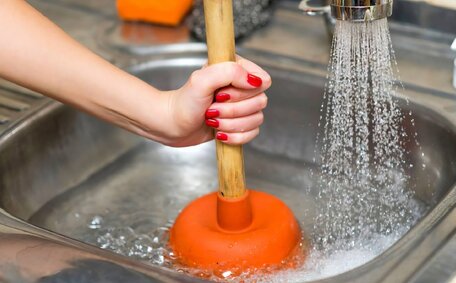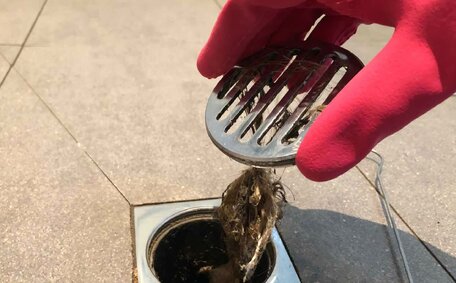Why Do Pipes Freeze?
Pipes are at risk of freezing when exposed to temperatures below zero for extended periods, especially in areas without heating like attics, basements, and garages. As the mercury descends in winter, water inside pipes cools down to the freezing point, leading to the formation of ice.
As freezing occurs, ice expansion puts significant pressure on the pipe walls. Such expansion can lead to pipe ruptures, resulting in significant water damage once the ice thaws. Lack of insulation and poor sealing against cold drafts heighten the risk of pipe freezing.
In regions like Strathfield with frequent below-freezing temperatures, homeowners need to take measures to safeguard against burst pipes. What do you do to tackle frozen pipes and ruptured plumbing effectively? Homeowners should learn to prevent pipe freezing by maintaining adequate heating, insulating pipes effectively, sealing the home’s exterior, and draining outdoor faucets.
Extreme Cold Temperatures
Strathfield residents should prepare for the winter’s freezing temperatures that jeopardise water pipes. At such cold temperatures, the risk of pipes freezing and bursting increases markedly.
When water temperatures reach these brutal levels, the content inside pipes loses heat, which can provoke freezing rapidly. As the temperature inside the pipe reaches 32°F (0°C), this is when the pressure builds up as water transforms from liquid to solid and it’s essential to know the next steps. The ice occupies more volume than the liquid water, causing tremendous pressure to build up inside the pipe walls.
The relentless expansion from a freeze can burst forming ice, causing a pipe to crack and lead to potential water leaks. Later, when the ice thaws in pipes tanks, the released water can leak out, potentially causing severe flooding and water damage. Properties with insufficient insulation or gaps near the water heater are particularly vulnerable to freezing and consequent damage.
During prolonged cold spells, insulating walls is crucial to retain heat and safeguard supply lines from freezing and breaking.
Lack of Insulation
Insufficient insulation can cause pipes to freeze in Strathfield homes. Supply lines in uninsulated exterior walls, attics, basements, and crawl spaces are vulnerable to freezing first.
Insulating water pipes helps retain heat, decelerating warmth loss to cold air and reducing freeze likelihood.
Closed-cell foam tubes are ideal to ensure your pipes are less likely to freeze. Fibreglass batt insulation also works when installed directly over the pipe. Insulating indoor water supply lines can significantly shield your pipes from freezing by mitigating the chances of internal ice formation.
Sealing air leaks around windows, doors, and crawl spaces can stop your pipes from succumbing to the drafts that expose them to cold air. Combining sealing with insulation offers the best protection for your pipes, minimising the threat of cold air. Explore ways to protect your home and pipes from extreme cold and consider a Strathfield plumbing expert’s assessment for an effective insulation strategy.
Poorly Sealed Homes and Drafts
Poorly sealed homes with cracks, gaps, and openings enable cold winter air to penetrate the structure. When frigid drafts circulate indoors unimpeded, they can drastically lower interior temperatures and raise the risk of frozen pipes.
Common entry points for cold air as it enters your home are worn window seals, loose exterior doors, and openings around chimneys. Unsealed access doors to crawl spaces and unfinished basements also usher in air that contributes to freezing pipes.
To protect where your pipes lay from the perils of freezing, under the terms and conditions of keeping your home winter-ready, Strathfield homeowners should meticulously seal against drafts. Seal openings in walls, roofing, and foundations using expandable spray foam, concrete, or other robust materials.
Caulking and weatherstripping windows and doors effectively reduces air leaks, protecting pipes in your home. Insulating attics, basements, and crawl spaces in your home can help prevent temperature extremes that cause the pipes your house depends on to freeze.
Let our licenced technicians conduct a hot water system check along with a full draught inspection to learn about frozen pipe prevention and sealing off water supply vulnerabilities tailored to your home. Sealing a draughty house provides year-round pipe protection, resulting in lower heating costs, better air quality, and consistent temperatures, thus preventing pipes from freezing.
Pipe Location and Materials
The material inside pipes and where they are located in a home significantly impacts the risk of freezing. Supply lines in uninsulated exterior walls, attics, basements and crawl spaces face the greatest exposure to freezing cold.
Copper, galvanised steel, brass, and PEX pipes can conduct heat more readily than PVC and CPVC plastic pipes, though they all can react in the same way to extreme cold. Metal pipes are more likely to lose heat faster, making them more susceptible to freezing. However plastic pipes become more brittle in cold temperatures, at higher risk of cracking if frozen.
To lessen the risk of freezing, especially close to water lines, ensure pipes are properly insulated. Firstly, focus on insulating supply lines in areas without heating.
If feasible, consider relocating pipes to interior walls or insulating and sealing gaps to prevent freezing. Discuss options with our team to choose pipe materials and ideal locations, such as within an insulated exterior wall, for your home.
Preventing and Preparing for Frozen Pipes
To prevent frozen pipes during winter, Strathfield homeowners can follow these crucial steps:
- Insulate your water pipes in unheated areas like basements, garages, attics, and crawl spaces. Closed-cell foam pipe sleeves or fibreglass batt wraps help maintain heat.
- Seal any cracks, openings, or gaps that would otherwise allow cold air into your home, providing an unwelcome chill to your pipes. Use caulk, spray foam, or weatherstripping.
- Shut off water to the garden hose bib and then clear the water drain line and disconnect it. Shut off and drain any outdoor hose bibs.
- Set your smart thermostat to a safe temperature on your boiler (at least 55°F) and ensure consistent heating to keep indoor temperatures warm, especially overnight.
- Open cabinet doors in the kitchen, bathroom zones to let warm air circulate and reach the exposed pipes under your taps, alleviating any water pressure issues inside sinks and appliances.
- You can also consider installing heat tape or heat cables that automatically warm pipes when temperatures drop.
If you’re unsure about how to proceed with your frozen pipes where water is frozen within, do use safe thawing methods and avoid using a blowtorch or other open flame. This can damage pipes and can also cause fire hazards. Instead, Learn the correct and safe measures for dealing with frozen pipes; reach out to our professional plumbing team.
Create an emergency plan for extreme cold seasons to quickly shut off the water supply and know who to call if a pipe bursts. Having the right preparation and preventative measures in place will help Strathfield homeowners avoid costly frozen water pipe repairs this winter.
Detecting Early Signs of Freezing
Vigilance in detecting early signs of water freezing provides homeowners with precious time to act before severe damage ensues. Stay alert for signs of cold water in your plumbing during periods of sub-zero temperatures.
Some key signals that could indicate impending frozen pipes include:
- No water flowing when the tap is turned on
- Faucets sputter when turned on or exhibit weaker than normal flow
- Pipes or valves are unusually cold to the touch
- Unusual noises coming from the pipes like banging or high-pitched creaking
Frost, ice, or visible iciness on a pipe suggests water within is starting to freeze and expand. Immediately check supply lines in unheated areas when extreme cold persists.
Should you notice any early indicators suggesting your pipes freeze, it is imperative to contact our team of licenced plumbers in Strathfield without delay. We can assess the situation and take urgent action before catastrophic pipe burst when they occur, preventing costly water emergencies.
Thawing Frozen Pipes
Comprehending how thaw frozen pipes requires patience and care to avoid rupture or further damage. Begin by turning off the main shutoff valve to prevent additional freezing in affected pipes. This precaution reduces pressure and allows consistent water flow inside your thawed pipes when they permit.
Apply heat gently to the frozen section, using a space heater or hair dryer, and move slowly along the affected area. Be extremely cautious not to overheat, scorch or ignite any materials. If pipes are located within uninsulated walls, apply heat to focus warmth on the interior wall surfaces instead.
Open nearby faucets too, to relieve pressure and let water flow as the ice melts. Check different areas until water starts draining again. Restore your system’s heating to normal levels, ensuring running water through the pipe flows consistently. For any leaks, persistent blockages, or burst pipes, it’s best to call a plumber immediately.
Galeotafiore stressed the importance of knowing how to properly thaw pipes and inspect the entire plumbing system for damage after thawing, before restoring the water supply.
Dealing with Pipe Bursts
A burst pipe constitutes an emergency requiring quick action to avert extensive water damage and flooding. If you discover a ruptured pipe which could possibly be due to frozen pipes burst, follow these critical steps:
- Locate the main water shutoff valve for your home (usually near the water metre) and turn it off immediately. This action halts further water from escaping the broken pipe.
- Immediately shut off the water supply to stop leakage, then disconnect power to nearby electrical devices to avoid electrocution risks. Turn off your gas if leaks are present.
- Contain the spraying water as best as possible with towels, buckets or pans until the main valve is shut off. Hustle to a safe nook and leave your valuable items out of harm’s way.
- For urgent repairs, contact our licensed plumbers at Strathfield Plumbing. We are available 24/7 to provide emergency burst pipe repairs.
- Assist the plumber by pointing out all water-affected areas for prompt damage control.
Taking immediate action in cold weather helps reduce damage from burst pipes in your home. Our expert plumbers have all necessary equipment to locate breaches, stop the flooding and restore your water supply once repairs are complete.





